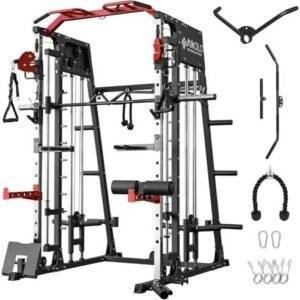In the pursuit of optimal physical health and well-being, the fitness landscape offers a myriad of training modalities, each designed to cater to diverse individual goals and preferences. Among these, Low-Intensity Steady State (LISS) exercise has emerged as a popular strategy, particularly for those seeking sustainable weight loss, improved cardiovascular health, and overall fitness without the excessive strain often associated with high-intensity workouts. This comprehensive guide aims to illuminate the principles of LISS programs, dissecting their mechanics, benefits, and practical applications for individuals at various fitness levels.
By focusing on moderate-intensity activities sustained over extended periods, LISS not only promotes fat oxidation and endurance but also engenders a lower risk of injury, making it an accessible option for beginners and seasoned athletes alike. Furthermore, as the current fitness culture increasingly acknowledges the importance of recovery and holistic well-being, LISS training aligns seamlessly with contemporary approaches to balanced exercise routines.
In the following sections, we will delve into the foundational elements of LISS, explore its physiological advantages, and provide insights into the effective implementation of these programs within your training repertoire. Whether you are looking to enhance your cardiovascular fitness, recover from more strenuous workouts, or integrate a manageable exercise regimen into your busy schedule, this guide is designed to equip you with the knowledge and tools needed to effectively maximize your fitness journey through LISS.
Table of Contents
- Understanding the Fundamentals of LISS Training and Its Benefits
- Designing an Effective LISS Workout: Key Principles and Structuring Techniques
- Incorporating LISS into Your Fitness Routine: Timing and Frequency Recommendations
- Monitoring Progress and Adjusting Your LISS Program for Optimal Results
- Final Thoughts
Understanding the Fundamentals of LISS Training and Its Benefits
Low-Intensity Steady State (LISS) training is a popular cardiovascular exercise method that involves maintaining a steady pace over an extended period, typically 30 minutes or more. It stands in contrast to high-intensity workouts, allowing individuals to engage in physical activity without exhausting themselves. The fundamental principles of LISS are centered around sustainability and accessibility, making it suitable for a diverse range of fitness levels. The *key characteristics* of LISS training include:
- Steady Pace: Participants maintain a consistent effort that elevates the heart rate to 50-65% of its maximum.
- Low Impact: Activities like walking, cycling, or swimming place minimal strain on joints, reducing the risk of injury.
- Extended Duration: Sessions typically last from 30 to 60 minutes, allowing for longer fat oxidation.
Incorporating LISS into one’s fitness regimen offers numerous benefits. One significant advantage is improved fat burning, as the body utilizes fat as its primary energy source during prolonged, lower intensity efforts. Furthermore, LISS training can enhance cardiovascular endurance by gradually increasing aerobic capacity. Other notable benefits include:
- Stress Reduction: The steady nature of LISS can significantly decrease stress levels and improve mood.
- Accessibility: LISS is easy to integrate into daily routines, making it advantageous for those new to exercise or those with time constraints.
- Recovery Aid: It serves as an excellent active recovery tool between high-intensity workout days.
| Benefits of LISS Training | Description |
|---|---|
| Fat Loss | Promotes fat oxidation and can contribute to weight management. |
| Increased Endurance | Improves overall cardiovascular health and stamina. |
| Minimal Injuries | Low-impact exercises reduce the risk of strains and injuries. |
| Stress Relief | Calming effects of steady-paced activity can enhance mental well-being. |
Designing an Effective LISS Workout: Key Principles and Structuring Techniques
To design an effective LISS (Low-Intensity Steady-State) workout, it’s essential to focus on a few key principles that enhance both enjoyment and results. Duration is paramount; aim for at least 30 to 60 minutes of activity, depending on your fitness level and goals. Ensure you select an intensity level that keeps your heart rate at approximately 50-65% of its maximum. This moderate intensity allows for sustained energy expenditure without causing excessive fatigue. Furthermore, incorporating variety in your workout is crucial to maintaining enthusiasm and preventing plateaus. You might consider activities such as brisk walking, cycling, or swimming as part of your regimen to keep it interesting while targeting different muscle groups.
When structuring your LISS routine, it’s beneficial to employ a systematic approach. Below are some techniques to consider for optimal program development:
- Warm-Up: Start with a 5-10 minute warm-up to prepare your body for exercise.
- Activity Selection: Choose at least two different low-intensity activities to alternate throughout the week.
- Frequency: Schedule 3-5 LISS sessions per week, allowing for recovery time between workouts.
- Progression: Gradually increase your duration or distance every few weeks to avoid stagnation.
| Day | Activity | Duration | Notes |
|---|---|---|---|
| Monday | Brisk Walking | 45 minutes | Focus on posture. |
| Wednesday | Cycling | 60 minutes | Maintain a steady pace. |
| Friday | Swimming | 30 minutes | Use different strokes. |
Incorporating LISS into Your Fitness Routine: Timing and Frequency Recommendations
Integrating Low-Intensity Steady State (LISS) cardio into your fitness routine doesn’t have to be complicated. Aim for 3 to 5 sessions per week, ensuring you allow your body adequate recovery time. Each session should last anywhere between 30 to 60 minutes, depending on your fitness level and overall goals. This steady approach not only boosts cardiovascular health but also aids in fat loss while preserving muscle mass. Optimal timing can vary based on individual schedules, but a consistent routine or pairing LISS with weight training might yield the best results. Consider the following tips:
- Choose a time of day that suits your lifestyle – morning, afternoon, or evening.
- Perform LISS on days you do not engage in intensive training for efficiency.
- Mix your LISS workouts with outdoor activities, like walking and cycling, for variety and enjoyment.
Balancing LISS with other forms of exercise is crucial for a well-rounded fitness regimen. If your days are primarily dedicated to strength training, supplement these workouts with LISS in the form of brisk walking or swimming. This balance allows your muscles to recover while still keeping you metabolically active. As a general guideline, consider the following frequency distribution in a weekly plan:
| Day | Activity |
|---|---|
| Monday | Strength Training |
| Tuesday | LISS (45 mins) |
| Wednesday | Strength Training |
| Thursday | LISS (30 mins) |
| Friday | Rest or Gentle Yoga |
| Saturday | LISS (60 mins) |
| Sunday | Active Recovery (Light stretching or walking) |
Monitoring Progress and Adjusting Your LISS Program for Optimal Results
To achieve the best results from your Low-Intensity Steady State (LISS) program, consistent monitoring of your progress is essential. This involves evaluating various metrics related to your performance, such as duration, heart rate, and perceived exertion. Consider tracking the following elements to ensure your program aligns with your fitness objectives:
- Frequency of workouts – Aim for consistency, ideally 3-5 times a week.
- Duration of sessions - Gradually increase from 30 to 60 minutes as your endurance improves.
- Heart rate – Maintain your heart rate within the target zone (50-65% of your maximum heart rate).
- Recovery time – Give yourself adequate recovery to avoid fatigue and injuries.
As you gather this data, don’t hesitate to make adjustments to your plan. If you notice a plateau in your progress or if you’re no longer feeling challenged, consider tweaking one or more variables. Here are some strategies to optimize your LISS program:
- Increase duration – Extend your workouts by 5-10 minutes to push your limits.
- Explore new activities – Incorporate different forms of exercise, such as cycling or swimming, to keep things fresh.
- Modify intensity – Slightly raise your target heart rate zone, ensuring you’re still within the LISS range.
- Include warm-up and cool-down – Optimal performance includes preparation and recovery activities to enhance your results.
Final Thoughts
maximizing your fitness regime through Low-Intensity Steady State (LISS) programs offers a versatile and sustainable approach to achieving your health and wellness goals. As we have explored throughout this comprehensive guide, LISS workouts provide a multitude of benefits, including improved cardiovascular health, increased fat oxidation, and enhanced recovery, making them an excellent complement to higher-intensity workouts or a standalone regimen for those seeking a more gentle, yet effective exercise method.
It is essential to recognize that LISS is not merely an afterthought in the fitness landscape; rather, it should be approached with the same level of commitment as any high-intensity training program. By carefully incorporating LISS into your weekly routine, paying attention to your body’s signals, and maintaining a balanced diet, you can create a holistic fitness strategy that supports long-term health and fitness sustainability.
As you embark on your LISS journey, remember that consistency is key. Track your progress, celebrate your achievements, and remain adaptable to your evolving fitness needs. By leveraging the insights and strategies outlined in this guide, you can confidently navigate the wide array of options available within LISS programming and ultimately cultivate a more resilient, healthier you.
In an age where time and efficiency are often at the forefront of our minds, LISS presents a compelling option that harmonizes well with busy lifestyles. Let this guide serve not only as a resource but as a motivation to pursue your fitness aspirations with vigor, knowledge, and an unwavering commitment to your health. Thank you for taking the time to delve into the dynamics of LISS – may your fitness journey be both rewarding and transformative.





